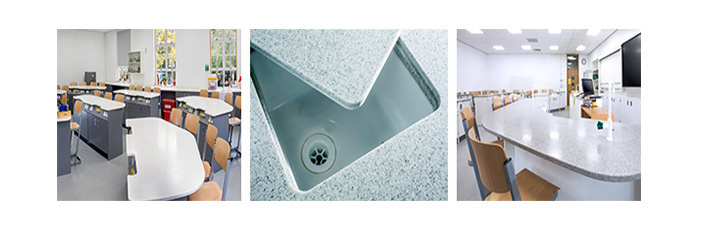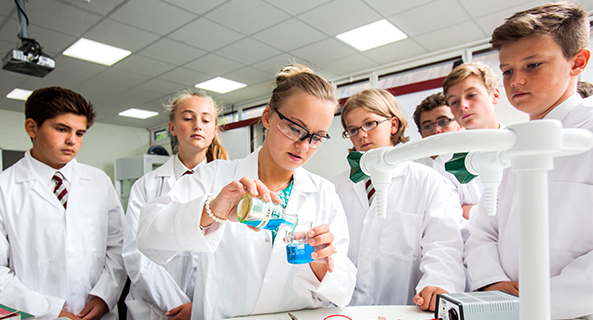Teaching Practical Science has never been more Important?
The UK needs more scientists, engineers and technicians if our knowledge economy is to flourish, and practical science shows students at first hand how scientists and technicians work. It engages students to follow science further through an academic or technical route and gives them practical skills and attitudes that will be valuable in their future careers.
Practical science is important for schools, not only because conducting experiments is a good way to learn scientific ideas and theories but it also provides opportunities to develop transferable skills such as team-work, resilience and analysis.
In recent years, with the introduction of new science GCSE and A levels, there has been concern that focus of schools on practical science could wane.
A new international study by the Gatsby foundation, aimed at school leaders, science teachers and technicians, highlights the key factors to consider when delivering practical science and the full article can be viewed here.
With the ever growing need for schools to perform well in exams, are practicals in science being neglected? In 2011, 97% of lab managers in Russell Group universities reported that incoming graduates are poorly equipped for their first year practical sessions.
But why is it so important to teach practical skills and what benefits can come from it?
Students find practical science engaging
Discover first hand through kinesthetic learning how things work
To learn from mistakes and how to avoid them next time
Develop independent learning skills in preparation for higher education
Gain stronger communication skills
Group learning helps prepare students for future career paths
Demonstrate and describe ethical, safe and skilful practical techniques appropriate for future career paths within the STEM sectors
Some facts can’t be taught without practical sessions
Important facts recommended in delivering great science practicals
In order for frequent practical lessons to become possible, each laboratory must first be accessible to both teachers and students, to accommodate group learning and different pedagogy learning styles.
10 recommended benchmarks on how to conduct good practical science lessons in the classroom, can be found in the Gatsby report.
Examples of laboratory classroom designs
At Innova we have worked with many schools, colleges and universities over the years creating inspirational science laboratories across all STEM subjects.
Key features of well designed practical laboratories are summarised in our case studies below:
Mendip – STEM Science Laboratory
Description of school: Mendip studio school, specialises in a wide range of vocational courses across a range of subjects including GCSE’s, BTec, EPQ (Extended Project Qualification), and A Levels to 300 of its students.
Brief: With an investment for a STEM (Science, Technology, Engineering and Mathematics) facility it was important for the studio school to create a learning environment that could engage students, enhance their practical skills and develop their attitude in order to prepare them for the world of work and future employers.
Layouts chosen: As flexibility is key for any lab design, Innova focused on clever space planning for the Genetics, Micro propagation and Physics laboratories which featured fixed benching and service pods providing the students and teachers the ability to work independently or in groups.
Benefits of layout: With plenty of perimeter storage to house specialist equipment and glassware needed to conduct practical experiments, means easy to set up, reduces clutter ensures students are focused on the task at hand.
Aberystwyth University – Practical Laboratory for the Department of Geography and Earth Science
Description of University: Aberystwyth University is well known for its post graduate teaching and learning facilities, providing students with the best environments and a high quality teaching faculties.
Brief: With over half a million pound investment into the Department of Geography and Earth Sciences, the faculty was keen to upgrade their science laboratory to a cutting edge learning facility. The main challenge the university faced was the need to increase the levels of practical experiments taking place a week. With that in mind Innova created an engaging environment and one that could increase the number of practical’s from 30 to 44.
Layout chosen: Where the science lab was once difficult for the lecturer to manoeuvre, restricting teaching styles and practical work has now opened up the room to a multi-functional learning environment with row of fixed benching and perimeter units and benching, housing sinks and electrical services for students to carry out more practical’s working individually, in pairs or groups.
Benefits of layout: With the increase in room capacity and layout accommodating more storage options, everything can now be safely stored away, freeing up valuable space for more experiments, lecturing efficiency and freedom to adapt to new teaching styles, improving student concentration and learning.

Headington School Science Laboratories
Description of school: Headington School is an independent girls’ school, founded in 1915. Over the last decade Headington has invested a significant amount of money in enhancing and creating state-of-the-art learning facilities for their students.
Brief: Science is a key strength at Headington as part of Innova’s brief it was important to develop the new science laboratories to 21st century learning environments to meet the needs of modern teaching and learning methods.
Layout and Benefit: Innova worked closely with the teaching staff throughout the design planning process, enabling us to get under the skin of the science behind their perfect lab .
As a result Innova’s wing layout design was specified for the chemistry labs to give teachers greater control of the learning environment whilst shortening communication lines, where as a pebble pod layout was more suited for Biology transforming it to a professional workspace, adapting to a range of curriculum requirements and teaching needs.




